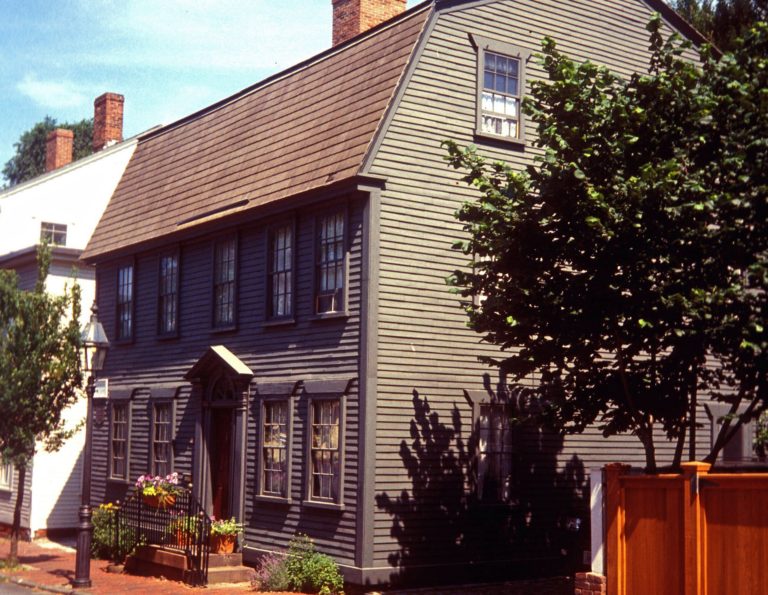Unfortunately, as this webpage shows, there were a lot of men with that name (surname also spelled Vaughan and Vaughn) documented in eighteenth-century Rhode Island. I think there are a couple of top candidates.
One is the man whom the Newport Mercury and a headstone both reported dying in March 1800 at the age of 56. This Daniel Vaughan was therefore a contemporary of Eleazer and Benjamin Trevett, the brothers from Newport that Gailer also accused. He could have been another sailor on their father’s ship Success.
This man was also the right age to have been the Daniel Vaughan who became one of the first third lieutenants commissioned in the Continental Navy in December 1775. And he could have been the owner of the Daniel Vaughan house in Newport, built after the war and shown above.
Another possibility is an older Daniel Vaughan, born in 1716 or 1722. Such a man appears to have been the right age to have been involved in all of these incidents:
- A Daniel Vaughan was first lieutenant under Capt. Simeon Potter on the privateer Prince Charles of Lorraine during King George’s War in 1744. Potter and his crew sacked a settlement in French Guiana. A priest’s detailed report suggests Lt. Vaughn took the lead in trying to hunt down slaves and plunder villages. Potter eventually stranded a lot of his men and took their shares of the loot, as Vaughan testified in the ensuing controversy back in Rhode Island.
- A Daniel Vaughan was first lieutenant on the Tartar under Capt. James Holmes in 1748 when it captured a schooner carrying sugar. There was another inquiry about that capture since the schooner had been flying a flag of truce.
- In 1764, a Daniel Vaughan was the gunner at Fort George on Goat Island off Newport. The local authorities ordered him to fire cannon at H.M.S. St. John. Ostensibly they were trying to stop the Royal Navy ship from sailing away with sailors suspected of stealing hogs, but the real reason for their animosity was that its captain had clamped down on molasses smugglers. Vaughan’s gun crew reportedly fired thirteen shots, striking the warship’s sails and rigging. This was the first of several examples of Rhode Islanders attacking royal government vessels in the years before the Revolutionary War.
It’s possible those Daniel Vaughans were related. It’s also possible that another Daniel Vaughan got into the mix. But all in all, I’d say either man’s activities are consistent with helping to tar and feather an unpopular informer in Boston in 1769.
COMING UP: The tailors from Boston.

No comments:
Post a Comment